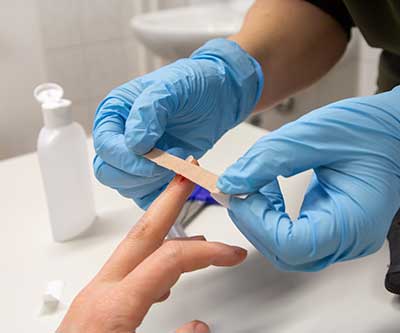Blood Borne Pathogens
Posted: Aug. 1, 2019 • By Kevin Kohler

What are blood borne pathogens?
Blood borne pathogens (BBVs) are microorganisms that are present in human blood and can cause serious diseases in humans. These pathogens include, Hepatitis B Virus (HBV), Hepatitis C (HCV), and Human Immunodeficiency Virus (HIV). BBVs may also be referred to as blood borne viruses and blood borne infectious diseases.
Aren’t BBPs pretty rare?
BBD can be spread where there is contact with blood from an infected person (or carrier), whether or not the infected person is sick. According to a review of studies in the Journal of Sports Medicine (Br J Sports Med 2004; 38 686-87), HPB is prevalent at high or intermediate levels in wide geographical areas of the world.
According to the review:
“The estimated risk of transmission of blood borne infections after (through the skin) exposure in healthcare workers is calculated to be 0.2–0.5% for HIV, 2–40% for HBV, and 1.8–10% for HCV. HBV is resistant to drying, ambient temperatures, simple detergents, and alcohol and can be stable on environmental surfaces for at least seven days.”
BBPs are widespread, long lasting and infectious with contact through the skin. BBPs can be found in body fluids other than blood and the same care should be extended to these fluids.
Do I need to worry about BBPs if I’m not a health care worker?

We should be aware of how and where we might come into contact with BBPs, and how to take reasonable steps to control these hazards. The potential for coming into contact with blood can occur for workers engaged in:
- Providing first aid;
- Health care and laboratory work;
- Cleaning offices, site trailers, vehicles;
- Handling refuse;
- Work around sewage, plumbing;
- Handling sharps (needles, knives, glass, etc.);
- Physical contact with others.
BBPs such as HIV and HPB can remain infectious in dried blood for weeks.
What are “Universal Precautions”?
Universal precautions refers to treating all human blood (and any other infectious materials) as if it is known to be infectious. This is a reasonable approach based on the prevalence of blood borne diseases and the difficulty of knowing whether or not someone is infectious.
What precautions should we take against BBPs?
The first step in determining the precautions to take against BBPs is to conduct a hazard and risk assessment to determine who is potentially exposed to BBPs. The next step is to establish an “Exposure Control Plan” to control the hazards. The exposure control plan:
- Identifies workers subject to the plan and the job tasks that expose them to hazards;
- Provides training to exposed workers who are at risk;
- Specifies the control measures to be taken to minimize the risk;
- Specifies the procedures to be taken if there is an exposure.

Appropriate training might include:
- The applicable H&S regulations;
- How to identify hazardous tasks and activities;
- Information on available vaccines, their effectiveness and availability;
- Proper hygiene practices;
- The hazard controls to be used and their limitations;
- The use and care of appropriate PPE and its limitations;
- The procedures to be used if there is an exposure incident.
Best Practices
The exposure control plan might be quite detailed for those who have first aid responsibilities or may only involve awareness training for workers not normally exposed to BBPs. All workers should be aware of the steps to take when exposure to BBPs is suspected or where fluids or objects containing BBVs have been found. Technical assistance in determining appropriate PPE, clean-up procedures and post exposure procedures may be required.
Control exposure to blood borne pathogens at the source
Related Articles

Confined Spaces
Confined spaces can be lethal A tragic example of confined space hazards is the Sullivan Mine incident where four people […]
Read Article
Working in Hot Temperatures
Heat can be a killer It’s surprising how many people die every year with heat as a contributing factor. We tend to […]
Read Article